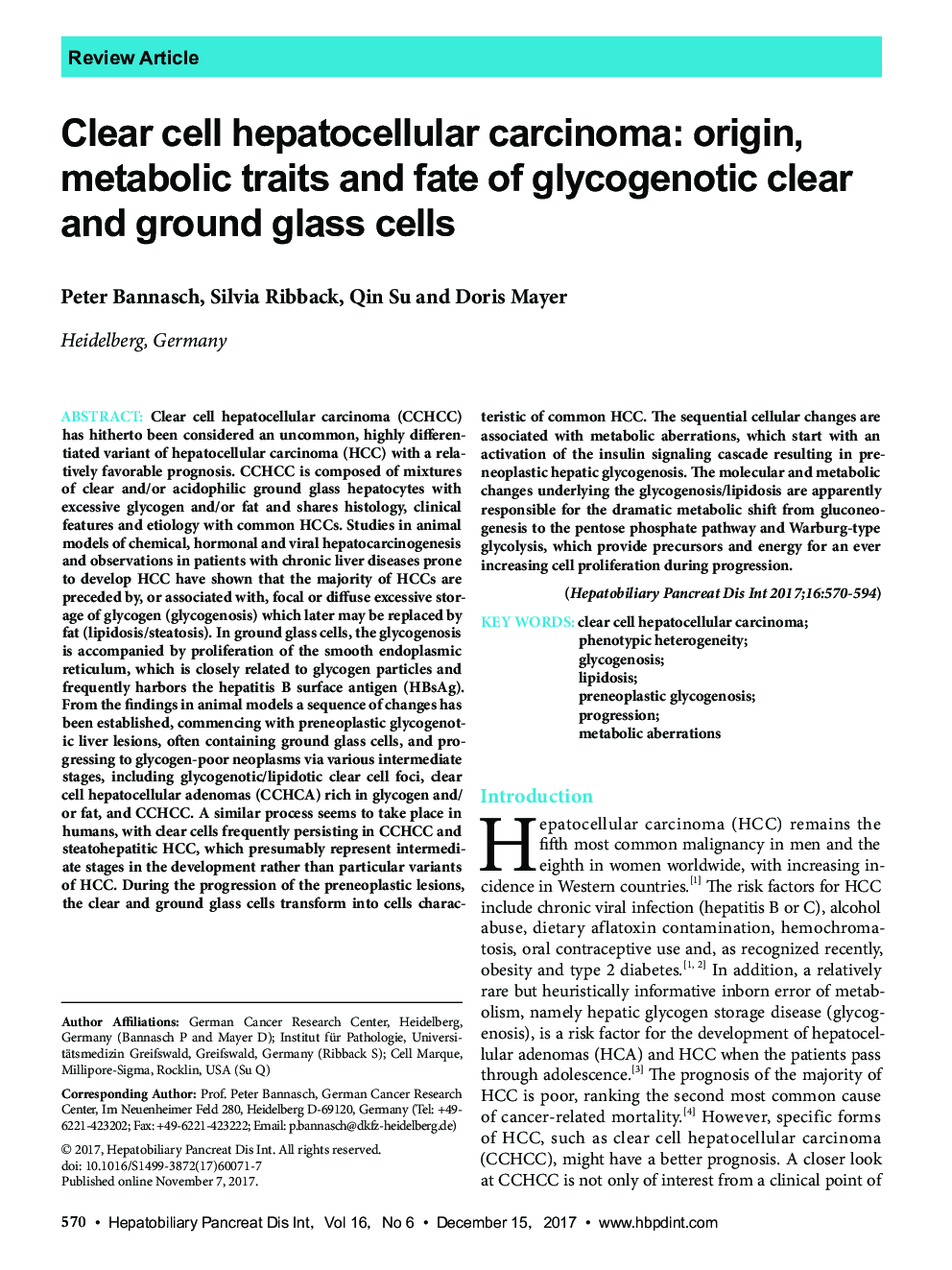| کد مقاله | کد نشریه | سال انتشار | مقاله انگلیسی | نسخه تمام متن |
|---|---|---|---|---|
| 8735271 | 1591042 | 2017 | 25 صفحه PDF | دانلود رایگان |
عنوان انگلیسی مقاله ISI
Clear cell hepatocellular carcinoma: origin, metabolic traits and fate of glycogenotic clear and ground glass cells
ترجمه فارسی عنوان
کارسینوم سلول های خونی سلولی روشن: منشاء، صفات متابولیکی و سرنوشت سلول های شیشه ای و روشن شیشه گلیکوژنیک
دانلود مقاله + سفارش ترجمه
دانلود مقاله ISI انگلیسی
رایگان برای ایرانیان
کلمات کلیدی
سلول های سرطانی واضح سلولی روشن، ناهمگونی فنوتیپی، گلیکوژنز، لیپیدوز، گلیکوژنز پیش پپتیدی پیشرفت، اختلالات متابولیکی،
موضوعات مرتبط
علوم پزشکی و سلامت
پزشکی و دندانپزشکی
کبدشناسی
چکیده انگلیسی
Clear cell hepatocellular carcinoma (CCHCC) has hitherto been considered an uncommon, highly differentiated variant of hepatocellular carcinoma (HCC) with a relatively favorable prognosis. CCHCC is composed of mixtures of clear and/or acidophilic ground glass hepatocytes with excessive glycogen and/or fat and shares histology, clinical features and etiology with common HCCs. Studies in animal models of chemical, hormonal and viral hepatocarcinogenesis and observations in patients with chronic liver diseases prone to develop HCC have shown that the majority of HCCs are preceded by, or associated with, focal or diffuse excessive storage of glycogen (glycogenosis) which later may be replaced by fat (lipidosis/steatosis). In ground glass cells, the glycogenosis is accompanied by proliferation of the smooth endoplasmic reticulum, which is closely related to glycogen particles and frequently harbors the hepatitis B surface antigen (HBsAg). From the findings in animal models a sequence of changes has been established, commencing with preneoplastic glycogenotic liver lesions, often containing ground glass cells, and progressing to glycogen-poor neoplasms via various intermediate stages, including glycogenotic/lipidotic clear cell foci, clear cell hepatocellular adenomas (CCHCA) rich in glycogen and/or fat, and CCHCC. A similar process seems to take place in humans, with clear cells frequently persisting in CCHCC and steatohepatitic HCC, which presumably represent intermediate stages in the development rather than particular variants of HCC. During the progression of the preneoplastic lesions, the clear and ground glass cells transform into cells characteristic of common HCC. The sequential cellular changes are associated with metabolic aberrations, which start with an activation of the insulin signaling cascade resulting in pre-neoplastic hepatic glycogenosis. The molecular and metabolic changes underlying the glycogenosis/lipidosis are apparently responsible for the dramatic metabolic shift from gluconeogenesis to the pentose phosphate pathway and Warburg-type glycolysis, which provide precursors and energy for an ever increasing cell proliferation during progression.
ناشر
Database: Elsevier - ScienceDirect (ساینس دایرکت)
Journal: Hepatobiliary & Pancreatic Diseases International - Volume 16, Issue 6, 15 December 2017, Pages 570-594
Journal: Hepatobiliary & Pancreatic Diseases International - Volume 16, Issue 6, 15 December 2017, Pages 570-594
نویسندگان
Peter Bannasch, Silvia Ribback, Qin Su, Doris Mayer,
